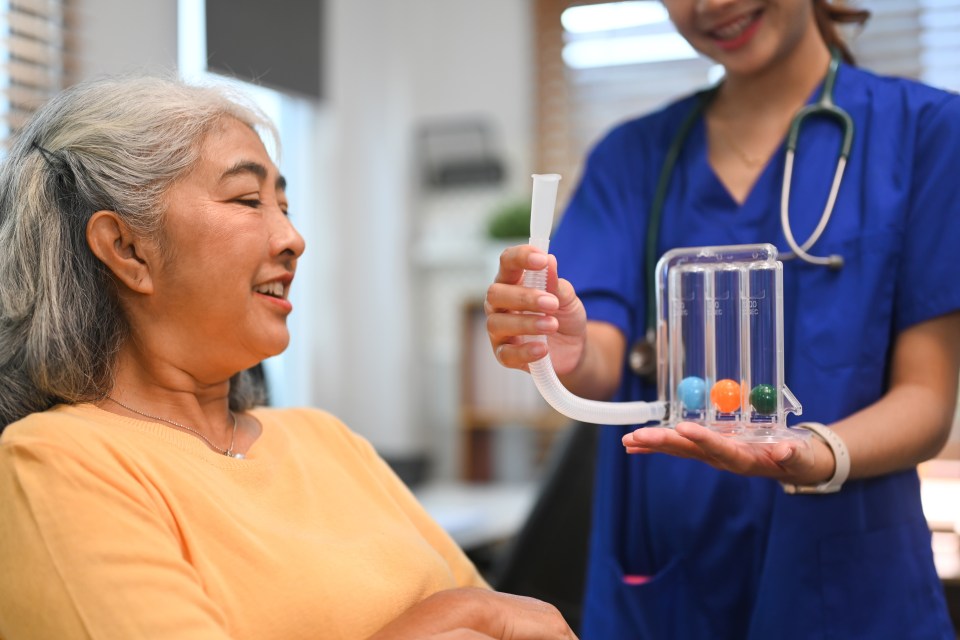Osteoporosis is a condition where bones become thin and weak, making them susceptible to fractures. Like other living tissues in the body, bone is constantly changing. Old bone is broken down and replaced with new bone. As you age, the old bone is removed faster than the body can replace it, leading to weaker, more fragile bones. This condition is known as osteoporosis. There are several stages of osteoporosis, and treatments vary depending on which stage you are in.
Bone Density Testing
The strength of bone is determined by bone density tests. Although X-rays and specialized CT scans may be used, the dual-energy X-ray absorptiometry (DEXA or DXA) is the most accurate and most common way to evaluate bone density. The test measures bone mineral content and bone density to identify reduced bone mass. This information helps your doctor determine your risk of bone fracture. DEXA can identify reduced bone density at an early stage, so treatment can be initiated sooner.
The DEXA scan is a non-invasive test that is completely pain-free and done in a matter of minutes. You will be asked to lie in a comfortable position while the scanner passes over your body.
The United States Preventive Services Task Force (USPSTF) recommends bone density testing begin at age 65 for all women. Some guidelines suggest women at increased risk–those with low body weight, who are smokers, or have a family history of osteoporosis and women who have experienced a previous fracture–should undergo screening before 65.
Although osteoporosis primarily affects women, some groups recommend testing for men at age 70. In men who are at high risk for osteoporosis, screenings may start at age 50. However, it should be noted the USPSTF did not find sufficient evidence to recommend osteoporosis screening for men.
Bone density tests are reported as a T-score and a Z-score.
Your T-score is determined by comparing your bone mineral density (BMD) with that of a healthy 25- to 35-year-old adult of the same sex and ethnicity, because bone mass peaks in this age range. Calculating the difference between BMD of a 30-year-old with normal bone health and your BMD determines your T-score.
To calculate your Z-score, your bone density is compared to that of persons of your same age and gender. A very low Z-score may prompt your healthcare provider to look for other causes of low bone density such as certain medical conditions or medications.
T-Score Values
- A T-score of +1 to -1 is considered normal bone density.
- Scores between -1 and -2.5 indicate osteopenia (bone density below normal)
- A score of -2.5 and lower is indicative of osteoporosis.
Z-Score
- A Z-score above -2.0 is within the acceptable range for age, sex, race, height and weight.
- A Z-score of -2.0 or lower is below that of others the same age, sex, race, height and weight.
Stages of Osteoporosis
According to the American Academy of Orthopaedic Surgeons, peak bone mass usually occurs between the ages of 25 and 30. By age 40, you slowly start to experience a decrease in bone mass. While healthy eating and exercise can slow bone loss, it can’t prevent the bone remodeling that comes with aging.
Most people with osteoporosis are over the age of 50. The condition occurs gradually and is divided into four stages.
Stage 1
At this stage, bone loss and new bone formation are occurring at the same rate, so you are no longer making more bone than you are breaking down. There are no symptoms in stage 1 and the bones are not noticeably weakened.
Stage 2
During the second stage of osteoporosis, old bone is broken down more rapidly than new bone is forming. There are still no symptoms, but your bone density scores may be lower. Your risk of fracture is not significantly higher, but changes are reflected in your T-score which may fall between -1 to -2.5. At stage 2, you may be diagnosed with osteopenia, a term that describes a lower bone mineral density, which weakens the bones. Osteopenia can be considered pre-osteoporosis.
Stage 3
Once you reach stage 3, you have osteoporosis. You are breaking down old bone at a much faster rate than you are building new bone. Your bone density is -2.5 or lower, and you are at a higher risk of breaking a bone. At this stage, there are no symptoms to indicate your bones are weakening, but you are more likely to sustain a fracture with a fall or injury. Bone loss is often in the spine, lower forearm and upper thigh.
Stage 4
This is the most severe stage of osteoporosis. You are at a high risk of bone fracture and may break a bone from a minor injury such as lifting a bag of groceries. The bones most at risk of fracture are hips, wrists and spine. You may also have other symptoms including pain and decreased mobility, as well as loss of height and stooped posture due to collapsed vertebrae.
Preventing Osteoporosis
The best way to prevent osteoporosis is through diet and exercise. The following recommendations will help to keep your bones healthy:
- Increase your intake of fruits, vegetables and proteins.
- Eat foods rich in calcium and vitamin D such as low-fat dairy, leafy green vegetables, fish, fortified juices and whole grains. Talk with your doctor about supplements, if needed.
- Incorporate weight-bearing and muscle strengthening exercises including stair climbing, hiking, jogging, walking, dancing, yoga and Pilates into your regular fitness routine. Aim for at least 150 minutes of exercise per week.
- Avoid smoking. Smoking decreases bone formation and speeds bone loss.
- Limit alcohol intake to no more than 1 drink daily for women and 2 drinks a day for men.
Osteoporosis Treatment
In addition to continuing to follow a healthful diet and exercising as tolerated, medications may be prescribed for the treatment of osteoporosis. Your doctor may recommend medication if:
- You have a T-score of -1.0 and -2.5 and are at a high risk of fracture in the next decade.
- When your T-score is -2.5 or lower.
- You break a hip or vertebra in a fall while standing as opposed to a fall from a height.
Osteoporosis Medications
Your healthcare provider may recommend calcium or vitamin D supplements to help prevent ongoing bone loss. Depending on the type and dosage, these drugs may be available over the counter or in prescription form.
There are many drugs given for the treatment of osteoporosis. As with any medications, there are side effects and risks that should be discussed with your physician. Some of the more common treatments include:
- Bisphosphonates. This is the most common class of medications used to treat osteoporosis, and they work by slowing bone loss. These medications come in pill form as well as injections and intravenous infusions. Oral bisphosphonates may be prescribed for daily, weekly or monthly consumption. Injectable bisphosphonates are given every three months and IV medications, once yearly.
- Denosumab. When you are at high risk of fracture, did not achieve the desired results with bisphosphonates or cannot take bisphosphonates, your doctor may prescribe injectable denosumab. This monoclonal antibody is given twice a year.
- Romosozumab. This monoclonal antibody is administered as a monthly shot and works to reduce bone density loss and build new bone. It is given for a duration of one year.
- Parathyroid hormone. Given as a daily shot, this medication promotes bone growth. It may be prescribed if you have very low bone density or have sustained broken bones. It is given for no more than two years.
- Calcitonin. A hormone given as a nasal spray or shot to reduce spinal fractures.
Current treatments work to slow bone loss and strengthen bones. Increasing bone mineral density can help to reduce fractures. Your healthcare provider will monitor the effectiveness of your osteoporosis therapy through DEXA scans.
The content of this site is for informational purposes only and should not be taken as professional medical advice. Always seek the advice of your physician or other qualified healthcare provider with any questions you may have regarding any medical conditions or treatments.



